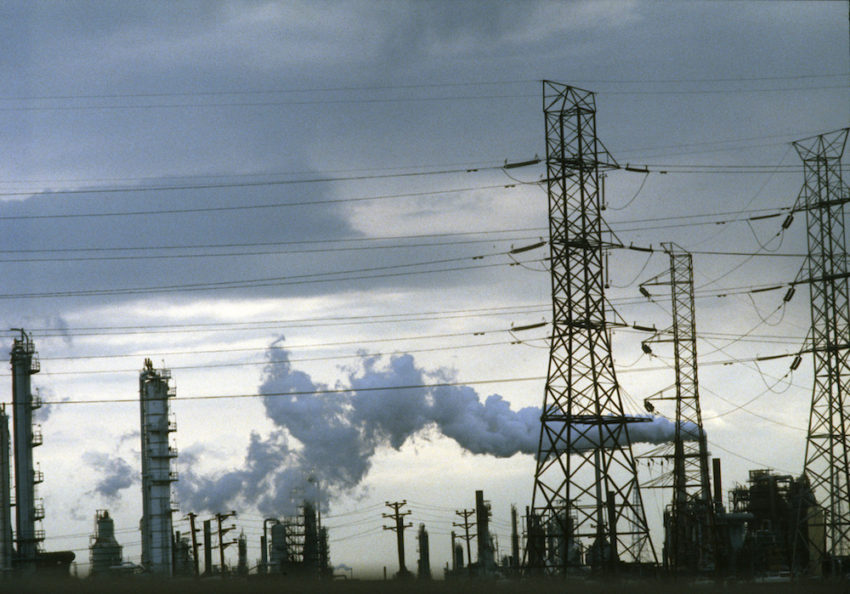U.N. on Climate Change: 'We Are Not Doing Nearly Enough'
LONDON—Governments should accept that we shall probably be living in a world 3oC warmer than it is today by the end of this century unless they urgently step up the speed at which they cut greenhouse gases, a United Nations assessment says.
As things stand, the UN says, even fully implementing the goals of the Paris Agreement (concluded in 2015) will deliver only one third of what is needed for the world to avoid the worst impacts of climate change.
It will make “a temperature increase of at least 3 oC by 2100 very likely”—meaning that governments need to deliver much stronger pledges when they are revised in 2020.
“Should the United States follow through with its stated intention to leave the Paris Agreement in 2020, the picture could become even bleaker,” says the assessment, in this year’s edition of the Emissions Gap report, produced by UN Environment and released ahead of next week’s UN climate change conferencein the German city of Bonn.
The report says the national pledges made in the Agreement two years ago will deliver only a third of the reduction in emissions needed by 2030 to meet the climate targets which governments agreed. And it says action by the private sector and by cities and other groups below national level is not increasing fast enough to help to close the gap.
The Paris Agreement aims to limit global warming to under 2oC, with a more ambitious goal of 1.5oC also on the table. The global average temperature is rising as a consequence of warming driven by ever higher greenhouse gas levels in the atmosphere, in response to the profligate global consumption of fossil fuels.
Meeting the Paris targets would reduce the likelihood of severe climate impacts that could damage human health, livelihoods and economies across the globe.
But the report does suggest practical ways to make deeper and more rapid cuts in emissions through rapidly expanding action to reduce them, based on existing options in the agriculture, buildings, energy, forestry, industry and transport sectors.
Strong action on other climate warmers—such as hydrofluorocarbons, through the Kigali Amendment to the Montreal Protocol, and other short-lived climate pollutants such as black carbon—could also make a real contribution. The Amendment aims to phase out the use and production of hydrofluorocarbons—chemicals primarily used in air conditioning, refrigeration and foam insulation.
“One year after the Paris Agreement entered into force, we still find ourselves in a situation where we are not doing nearly enough to save hundreds of millions of people from a miserable future,” said Erik Solheim, head of UN Environment.
“This is unacceptable. If we invest in the right technologies, ensuring that the private sector is involved, we can still meet the promise we made to our children to protect their future. But we have to get on the case now.”
Emission peak
CO2 emissions have remained stable since 2014, driven in part by renewable energy, notably in China and India, raising hopes that emissions have peaked, as they must by 2020 to remain on a successful climate trajectory.
But the report warns that other greenhouse gases, such as methane, are still rising, and a global economic growth spurt could easily see CO2 emissions heading upwards again.
On 30 October the World Meteorological Organisation reported that atmospheric concentrations of CO2 rose at record speed in 2016 to their highest level in 800,000 years. The abrupt changes in the atmosphere witnessed in the past 70 years, it said, are unprecedented.
The Emissions Gap report says current Paris pledges make 2030 emissions likely to reach 11 to 13.5 gigatonnes of carbon dioxide equivalent (GtCO2e) above the level needed to stay on the least-cost path to meeting the 2oC target. One gigatonne is roughly equivalent to one year of transport emissions in the European Union (including aviation).
The emissions gap in the case of the 1.5oC target is 16 to 19 GtCO2e, higher than previous estimates as new studies have become available.
Slackening momentum
“The Paris Agreement boosted climate action, but momentum is clearly faltering,” said Dr. Edgar Gutiérrez-Espeleta, minister of environment and energy of Costa Rica, and president of the 2017 UN Environment Assembly.
Avoiding new coal-fired power plants, and faster phasing out of existing ones, would help. There are an estimated 6,683 operating coal-fired power plants in the world, with a combined capacity of 1,964 GW.
If they work until the end of their lifetimes and are not retrofitted with carbon capture and storage (a controversial and still commercially unproven technology), they will emit an accumulated 190 Gt of CO2.
In early 2017, an additional 273 GW of coal-fired capacity was under construction and 570 GW planned. These new plants could lead to additional accumulated emissions of approximately 150 Gt CO2. Ten countries make up approximately 85% of the entire coal pipeline: China, India, Turkey, Indonesia, Vietnam, Japan, Egypt, Bangladesh, Pakistan and the Republic of Korea.
Another report, from the 1 Gigaton Coalition, shows that partner-supported renewable energy and energy efficiency projects in developing countries can cut 1.4 GtCO2e by 2020—provided the international community meets its promise to mobilise $100 billion per year to help developing countries adapt to climate change and reduce their emissions.





Geen opmerkingen:
Een reactie posten